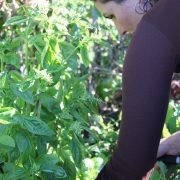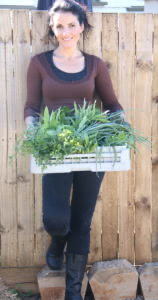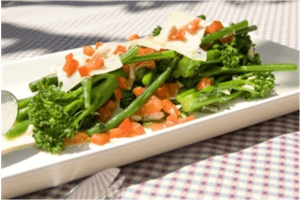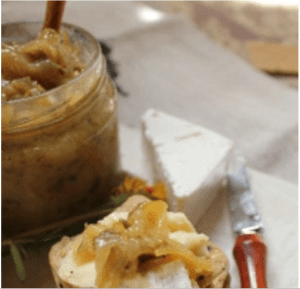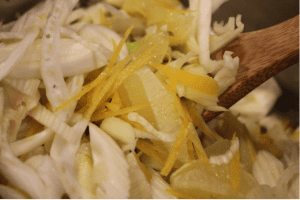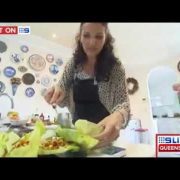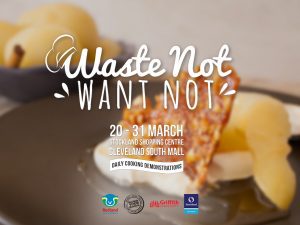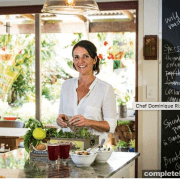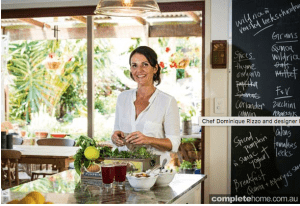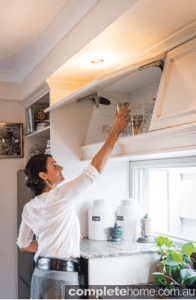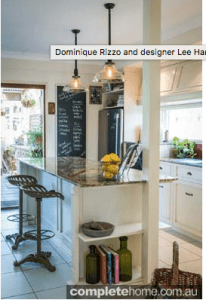A sustainable kitchen garden – making a menu from your mulch
The following guest blog post is by Dominique Rizzo from Pure Food Cooking, Channel 10’s “Ready Steady Cook” and “The Circle”…
“A sustainable kitchen garden – Making a menu from mulch” was originally published at 1 Million Women some years ago.
Life is busy! I feel that this year is flying past with the blink of an eye. When I am out and about I often get asked what I cook at home and am often embarrassed to say that I indulge in the simplest of cooking and quite often live on vegetable soups, loads of grilled, poached or baked seafood’s, and fabulously fresh salads and vegetable dishes made with ingredients that I manage to pick from my brothers garden next door…. my little patch of herb and vegetable paradise is in the making.
Most of us are doing our best to grow our own little patch of produce and it’s wonderful if you are just managing to have only a couple of pots of herbs as gardening as I have found out does require a little or even a lot of effort to reap the benefits.
Working in my own sustainable kitchen garden I have come up with some great ideas on how to make the most out of what you grow, avoid wastage and even save money. Fresh herbs are fantastic to use in all cooking, salads, drinks and even desserts and tend to be very seasonal so when they come on take advantage of the abundance of these few simple ideas.
Using the harvest from your sustainable kitchen garden:
Herbs
- Blend your herbs in a food processor with a little oil and freeze in ice cube trays, remove when frozen and then store in plastic bags or plastic containers, use the cubes to flavour soups, sauces, stir-frys or even to add to a dressing of olive oil, vinegar and a squeeze of lemon. Any combination of herbs are ideal for tossing with steamed vegetables, dressing steamed or baked fish, chicken or seafood or mixing through boiled potatoes with a little mayonnaise, low-fat yoghurt or sour cream.
- Try making pesto’s with a variety of different nuts and of course some sharp parmesan, this can also be frozen and is a great pasta sauce standby.
- Make your own fresh dried herbs, nothing like what you buy in the supermarket and are easily done by placing them onto a baking tray and allowing them to sit in a very low oven of about 40 – 50 overnight. Simply, scrunch up the herbs and store them in jars.
Lettuces are fantastically easy to grow and if you are not on top of them they soon start to flower, so get in while the leaves are young and sweet and use the leaves for wonderfully fresh salads. You can also lightly steam them and dress with olive oil and lemon or sauté the leaves with a little butter, garlic, prosciutto or bacon and top with toasted fresh breadcrumbs for a delicious side.There is always lettuce soup, a quick light soup combining garlic, onions, lettuce, homemade chicken stock, simmered until the onions are softened and garnished with fresh parsley and a dollop of sour cream or yoghurt.
Home grown tomatoes have the most amazing flavour, they make great fresh sauces and keep well packed into sterilised jars, tomato and chilli jam makes a great gift for you chilli-loving friends and helps you get stuck into that chilli bush you have full of that fiery flavour. Tomato, apple and rosemary jelly is superb as a spread on fresh scones or pikelets and ideal as an accompaniment to sandwiches and of course a kitchen is not home without a spiced tomato relish, it is a must in any one’s fridge or pantry great served with cold meats, barbecued meats, on sandwiches or tossed through chopped vegetables with a little oil before roasting tomato relish.
Lemons make fresh and vibrant table decorations piled high in glass vases with fronds of rosemary or thyme, squeeze the juice and zest the skin and freeze for use in drinks, homemade lemonade, lemon curd is delicious and easy to throw together for a country breakfast served with pancakes or spooned onto tartlets for a delightful afternoon tea with friends. Lemon zest and juice is perfect for adding to dressings, marinades, baking, and is ideal blended with garlic and fresh herbs rubbed into lamb, fish, or chicken.
Preserved lemons are quite expensive but very easy to make. Wash your lemons and then make a cut through the middle and then into quarters keeping the lemon intact. Pack each of the lemons with rock salt then fit them into your sterilised jar, I love adding, peppercorns, a stick of cinnamon, a bay leaf, some cloves and a star anise for a real middle eastern flavour. Alternate the jar with salt-filled lemons and more rock salt then fill the jar with lemon juice until the lemons are covered. Secure the lid tightly then sit in a dark place for up to 7-8 months. These make well received Christmas gifts, or just a thank you to a friend and why not wrap a little preserved lemon recipe for a wonderful Moroccan salad or a tagine, around the jar.
One of my other favourite recipes is for my divine lemon and fennel relish , it is an amazing accompaniment to fish, chicken, pork or lamb and goes beautifully with cheese, or tossed with freshly steamed asparagus or beans for a zesty side dish, this relish also makes good use of that excess fennel which tends to grow endlessly.
For a sustainable garden to work for you, you need to use it and keep on using it. So grab those empty jars that I know you have stored away for a rainy day and start cooking. The gift of food is something very special and is always well received from my family who have everything they need in the material sense and love eating. Receiving a basket or jar of homemade goodies from anyone for me is a real treat, you know that a lot of love and thought has gone into each and every mouthful.

